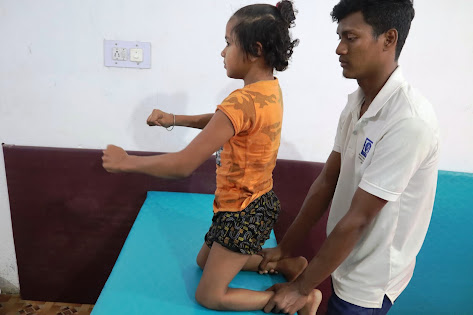IMPORTANCE OF “SUPINE TO SITTING THERAPY” FOR CEREBRAL PALSY

IMPORTANCE OF “ S U P I N E to S I T T I N G T H E R A P Y ” FOR CEREBRAL PALSY 1. What is supine to sitting therapy? Supine to sit is a therapy program, where the person comes to sitting position from supine lying position. Person has to come to sitting position by both his legs stabilized on the floor surface. The person is in supine position with knees extended; instruct the person to sit up by raising head, neck and trunk to sitting position. 2. Why it is an important therapy for cerebral palsy Benefits of "Supine to Sitting" Therapy in Cerebral Palsy: • In this the child uses core abdominal muscles to lift the weight of the body in the midline position. • It is a primarily an exercise to gain control of the head and neck, enable movement of the trunk and reduce tightness in the back muscles so that ...




